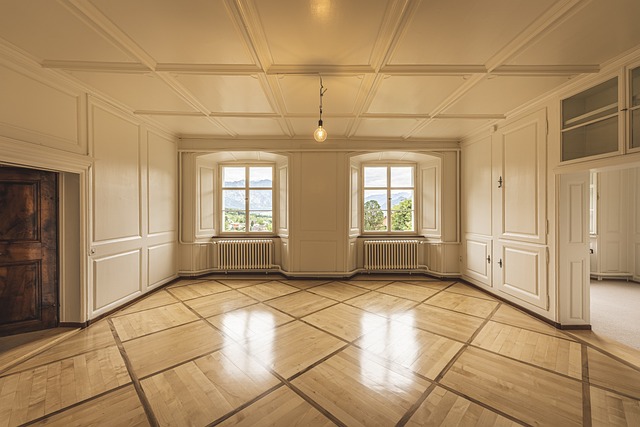Understanding that home exterior painting costs can range from $5K-$15K+ depending on size, paint type, and professional involvement is crucial for renovation projects. Quality painting offers long-term benefits by protecting homes from weather damage, reducing maintenance, boosting curb appeal, and increasing resale value. Balancing quality and cost involves prioritizing high-impact areas with professionals, choosing durable paints, and considering DIY options for less critical surfaces. Informed material selection—considering price, durability, aesthetics, and maintenance needs—is key to managing costs effectively. Prioritizing long-term savings over immediate expenses ensures that investing in high-quality materials and expert craftsmanship leads to significant future cost savings and a more durable renovation.
Balancing quality and cost in exterior renovations is an art. This comprehensive guide explores the factors influencing home exterior painting costs, offering insights into how to achieve top-notch results without exceeding your budget. From understanding pricing structures to strategic material choices, we provide actionable strategies for smart renovation decisions. Discover long-term savings tips, ensuring your investment stands the test of time while enhancing your home’s curb appeal.
Understanding Home Exterior Painting Costs: A Comprehensive Breakdown
Understanding Home Exterior Painting Costs: A Comprehensive Breakdown
When considering exterior renovations, one of the primary concerns is, naturally, the budget. Home exterior painting costs can vary greatly depending on several factors such as the size and condition of your home, the type of paint chosen, and whether you’re tackling the project yourself or hiring professionals. For instance, while a typical residential exterior painting job might range from $5,000 to $15,000, specialized applications like stucco or architectural finishes can significantly drive up these costs.
To ensure your renovation stays on track financially, it’s crucial to get detailed quotes from reputable painters. These should include labor and material costs, as well as any necessary preparation work like pressure washing or repairing damaged surfaces. Additionally, consider the long-term value of quality painting – a skilled painter can apply durable coatings that protect your home from weather damage, reduce maintenance needs, and enhance its curb appeal, potentially increasing resale value over time.
Strategies to Achieve Quality Without Breaking the Bank
When it comes to exterior renovations, striking a balance between quality and cost is an art. While achieving a stunning look is desirable, it’s essential to be mindful of your budget. One effective strategy to enhance the curb appeal of your home without overspending on exterior painting costs is to focus on high-impact areas first. Identify key sections that require attention, such as the front door, windows, or trim work, and invest in professional painting services for these areas. By prioritizing these elements, you can ensure a more significant return on investment.
Additionally, selecting the right paint and materials can make a difference. Opting for long-lasting, high-quality paints might have a slightly higher upfront cost, but they offer better coverage, durability, and color vibrancy, reducing the need for frequent reapplication. Exploring DIY options for less critical surfaces or adopting creative techniques like geometric patterns or accent walls can also help reduce home exterior painting costs while allowing for personal expression.
The Impact of Material Choices on Renovations Budget
When planning exterior renovations, one of the most significant factors influencing both quality and cost is the choice of materials. Different materials carry vastly different price tags, each with its own trade-offs in terms of durability, aesthetics, and maintenance requirements. For instance, while high-quality, long-lasting paints might initially seem pricier than budget options, they can significantly reduce future repainting costs due to their superior wear resistance. On the other hand, opting for cheaper materials could lead to more frequent replacements, ultimately inflating renovation expenses over time.
Home exterior painting costs, for example, can vary widely depending on factors like the type of paint (e.g., acrylic, latex), brand, and finish (matte, satin, glossy). Additionally, preparation and application methods also contribute to overall expenses. Professional painting services often charge extra for thorough surface preparation, priming, and multiple coats to ensure a flawless finish. Therefore, informed material selection is key to balancing quality and cost in exterior renovations, ensuring both longevity and an appealing curb appeal without breaking the bank.
Long-Term Savings: Investing in High-Quality Exteriors
When considering exterior renovations, it’s essential to look beyond immediate costs and think about long-term savings. High-quality materials and expert craftsmanship in home exterior painting can significantly reduce future expenses. While initial investment for top-tier exteriors might be higher than budget-friendly options, durability and longevity pay off over time. Weatherproofing, high-performance insulation, and robust finishes repel wear and tear from the elements, delaying the need for repairs or replacements.
Think of it as an investment in your home’s future. Quality exterior painting protects surfaces, prevents water damage, and maintains curb appeal, which is crucial for property value. By choosing durable materials and skilled professionals, you can enjoy a beautifully renovated space that withstands the test of time, ensuring peace of mind and saving you money in the long run on repetitive repairs or complete redo’s.
When balancing quality and cost in exterior renovations, understanding the factors that influence home exterior painting costs is key. By employing strategic choices for materials and methods, you can achieve a high-quality finish without exceeding your budget. Remember, while prioritizing cost-effectiveness, investing in durable and high-quality exteriors pays off in the long term through reduced maintenance and increased property value.
